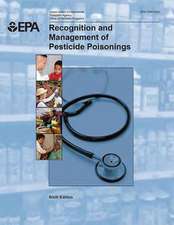Membrane Filtration Guidance Manual
Autor U. S. Environmental Protection Agencyen Limba Engleză Paperback
Preț: 202.65 lei
Nou
Puncte Express: 304
Preț estimativ în valută:
38.78€ • 40.24$ • 32.41£
38.78€ • 40.24$ • 32.41£
Carte disponibilă
Livrare economică 22 februarie-08 martie
Preluare comenzi: 021 569.72.76
Specificații
ISBN-13: 9781507685259
ISBN-10: 1507685254
Pagini: 348
Dimensiuni: 216 x 279 x 18 mm
Greutate: 0.81 kg
Editura: CREATESPACE
ISBN-10: 1507685254
Pagini: 348
Dimensiuni: 216 x 279 x 18 mm
Greutate: 0.81 kg
Editura: CREATESPACE















